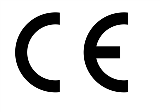Medical devices in the home
If you are soon to be discharged from hospital or if you have recently come home from hospital, you may have been given a medical device such as a wheelchair, a walking aid, a blood glucose meter or a blood pressure monitor for use at home.
You may be nervous and afraid that you will not be able to work the device, or anxious that you will forget everything you have been told or what you have to do. This page will help you get the information that you need.
What is a medical device?
A medical device is a healthcare product or piece of equipment that a person uses for a medical purpose. It is not a medicine or drug. Medical devices can diagnose, monitor or treat disease and help people with physical impairments to become more independent.
Examples of medical devices include wheelchairs, contact lenses and solutions, blood pressure and blood glucose meters, pregnancy test kits and more complex equipment like infusion pumps, hip implants, coronary pacemakers and artificial heart valves.

A valid medical device bears a CE mark, which indicates that it meets the basic requirements for safety and effectiveness
under European law.
We have compiled some common questions to help you get all the information you need about your device and how to use it safely at home. You may already know the answers to these questions, but if you are unsure about some, we suggest that you discuss them with your doctor, nurse or other healthcare professional.
Checklist of questions
Before you begin using your medical device it is important that you know the answers to the following questions:
- Do you know what your medical device is?
- Do you understand what the device is for and why you need it?
- Is your device specifically made for you?
- Do you understand when you should use your device?
- Have you been shown how it works? Do you understand any instruction booklet for the device?
- Have you and your carer or family been trained to use the device?
- Do you need to follow any particular cleaning, storage or care instructions?
- Is the device yours to keep? If the device is on loan to you, do you know when and where to return it?
- Does the device require regular servicing or maintenance? Who looks after this?
- Do you know when to replace this device?
- Do you know how you should transport the device?
- Does the device require any consumable items (for example test strips, needles, masks) for proper operation? Where can these be bought? Do you need a prescription?
- Do you know what to do if the device stops working or breaks down?
- Do you know who to contact to report problems with the device?
- Do you know who to contact if your carer or family have further questions about using the device at home?
Device details
It is important that you keep a record of details about your medical device and store these details where they can be easily accessed.
You can use the headings in the list below to help you make this record:
- Your name
- Name of device
- Model or serial number
- Type of device
- Next service or maintenance due on
- Device to be returned on
- Contact person in case of questions or difficulties
- Any other information you wish to include
How to report an incident to the HPRA
If a medical device poses a risk to your health and safety, stop using it where possible and report the problem to your healthcare provider, the HPRA and the manufacturer of the device. You should report any unexpected problem or malfunction that may affect your health or cause or contribute to an injury, for example a blood glucose meter giving an incorrect blood glucose reading, leading to incorrect treatment.
You can report incidents to the HPRA by filling in our online user report form. If you would prefer to fill out a printed copy of the form, you can download it from our website or request a copy by phone or e-mail.
Print/PDF versions
This webpage is also available as a leaflet in PDF or print format. You can request a copy by emailing communications@hpra.ie.